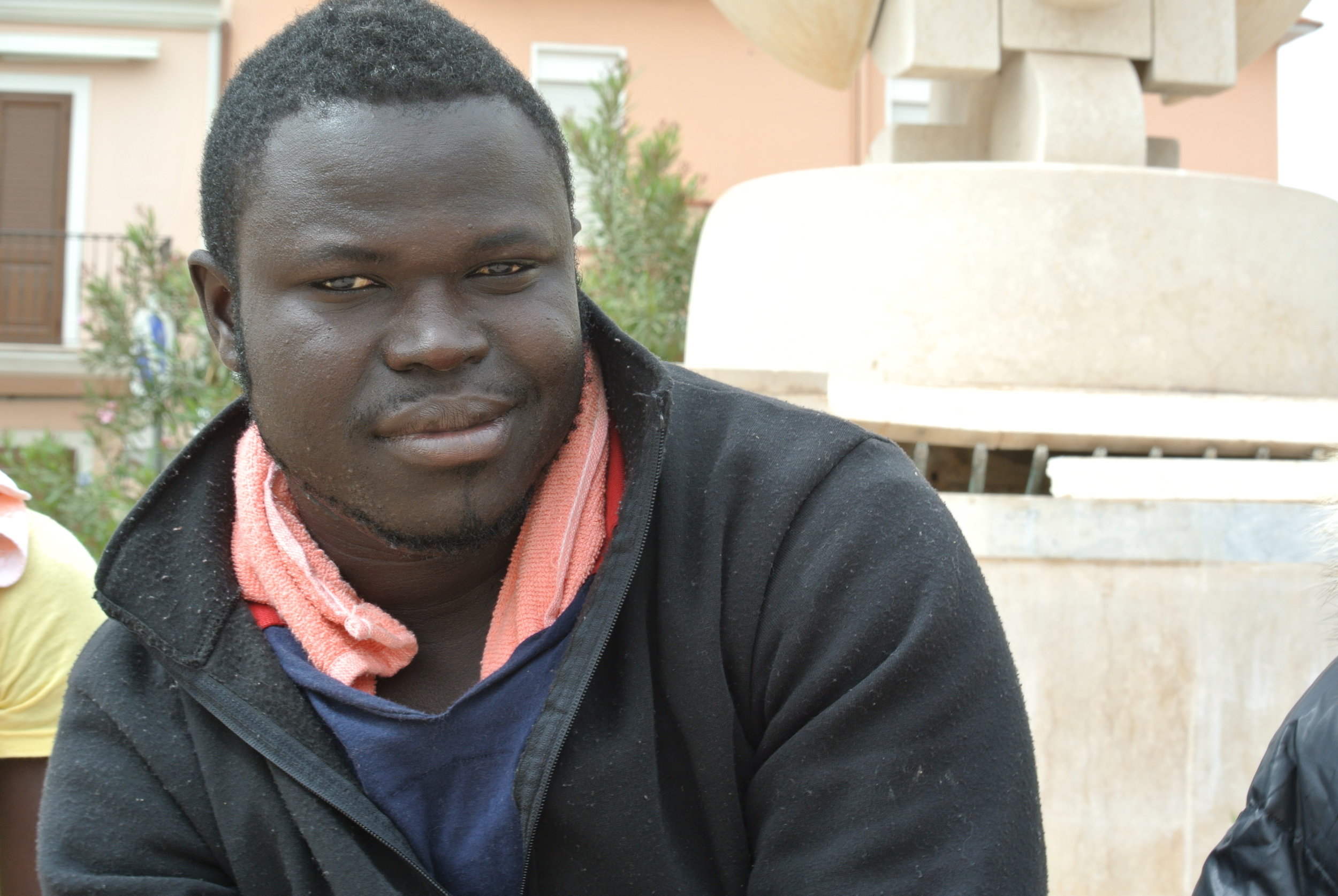Meet Yanks
Yanks (Gambia) 12 days after rescue and landing, in Lampedusa, Italy. 28 April 2017. ©Pamela Kerpius/Migrants of the Mediterranean
by
Pamela Kerpius
Recorded:
28 April 2017
Published:
2017
Revised:
1/10/25
Meet Yanks.
20 years old and from Serekunda, Gambia.
To reach Lampedusa he crossed six countries: The Gambia, Senegal, Mali, Burkina Faso, Niger, and the most dangerous of all, Libya.
His journey took just over one year. He reached Agadez, Niger after two weeks of travel from Senegal, where he briefly stayed.
Yanks crossed the Sahara desert in pickup truck with 25 people. It was a voyage that took two weeks, about twice as long as the average trip, because after leaving Agadez the group was attacked. All of the passengers were robbed and held hostage for a full week, and the driver was shot in the leg.
“Everyone was scared,” said Yanks.
He reached the Libyan border and was held in Baye*, Libya, for a week, where his captors waited for payment.
He then moved onward to Sabha, Libya, where he remained for three months. He was able to leave the compound, which he did daily for work, which consisted of construction jobs that paid him around 5-10 dinars a day.
He was robbed and his money was stolen once, and seeing this, the rest of the people around him got scared. There was a Gambian man hired by Arabs who would kidnap Black people and throw them in jail to be held for ransom. The threat of this particular man was so strong that Yanks heard of his reputation all the way from Bani Waled, Libya, where the man conducted his business.
Yanks next made his way to the coastal camp, Sabratha, where he stayed with no shelter or place to sleep. The water was salty from the tap, and unfit for drinking and even washing; he did not bathe or even brush his teeth, for six months. He developed sores on his arms and hands from not washing that turned into scars. Bottled water was expensive, but with what little money he had, sometimes he would use it to dilute the tap.
“You don’t see nothing.
You don’t see no light.”
There were more than 500 people in Sabratha during his stay. It was safe inside the camp, “only outside is the problem,” he said, where people faced further threat of kidnapping and being enslaved.
All the same, being “safe” inside the camp only meant the promise of being surveilled by the trafficker who had brought him there. That trafficker as “owner,” Yanks said, is a status under threat even after his passenger boards the boat.
Traffickers were known to sell passengers to a new traffickers for 300-500 dinars. Should the transaction occur, a person may be returned to shore and to a new cycle of enslavement starts, and, financially, they begin from zero to secure liberty from Libya, the Mediterranean crossing.
Yanks crossed the Mediterranean Sea on Friday at midnight, 15 April 2017, in a rubber dinghy with 141 people, including 21 women, five of whom where pregnant, and one baby. He was out to sea for 12 hours, where “You don’t see nothing,” he said, “You don’t see no light” about the pure darkness and fear on the water.
He was rescued by the Guardia Costiera and landed in Lampedusa at 6:00 a.m. on 16 April 2017, Easter Sunday.
Yanks is an amazing human being.
*City name and spelling not verified.

